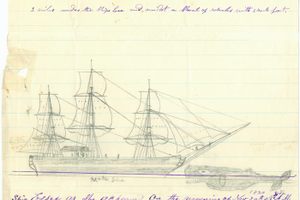About
Housed in a 19th century candle factory that once used spermaceti oil for its illuminating products, the Nantucket Whaling Museum is now a capsule of the history of whaling in the area, and its tragedies.
While a 46-foot-long sperm whale skeleton (taken from a whale that washed to shore on New Year's Day of 1998) that hangs from the ceiling is definitely the most staggering object, along with the massive 1849 Fesnel Lens from the a lighthouse, the most harrowing artifacts of whaling are much smaller.
The whale ship Essex infamously was attacked by a sperm whale in the Pacific in 1820. The crew suffered for three months on their small whaling ship through cannibalism, and the stories the survivors brought back inspired Herman Melville's Moby-Dick. The youngest crew member, Thomas Nickerson the 14-year-old cabin boy, wrote a memoir of his ordeal that was only published in the 1980s by the Nantucket Historical Association, which also runs the whaling museum. The association also holds other Essex-related materials including maps, documents, first mate Owne Chase's glasses, a bit of twine made while out at sea, and a salvaged chest from the wreck.
The museum, which started in 1929, also holds an impressive array of scrimshaw, workings of the 1881 town clock, and an original beam press from when the candle factory turned that hard-earned whale spermaceti into light.
Related Tags
Community Contributors
Added By
Published
July 31, 2013

























